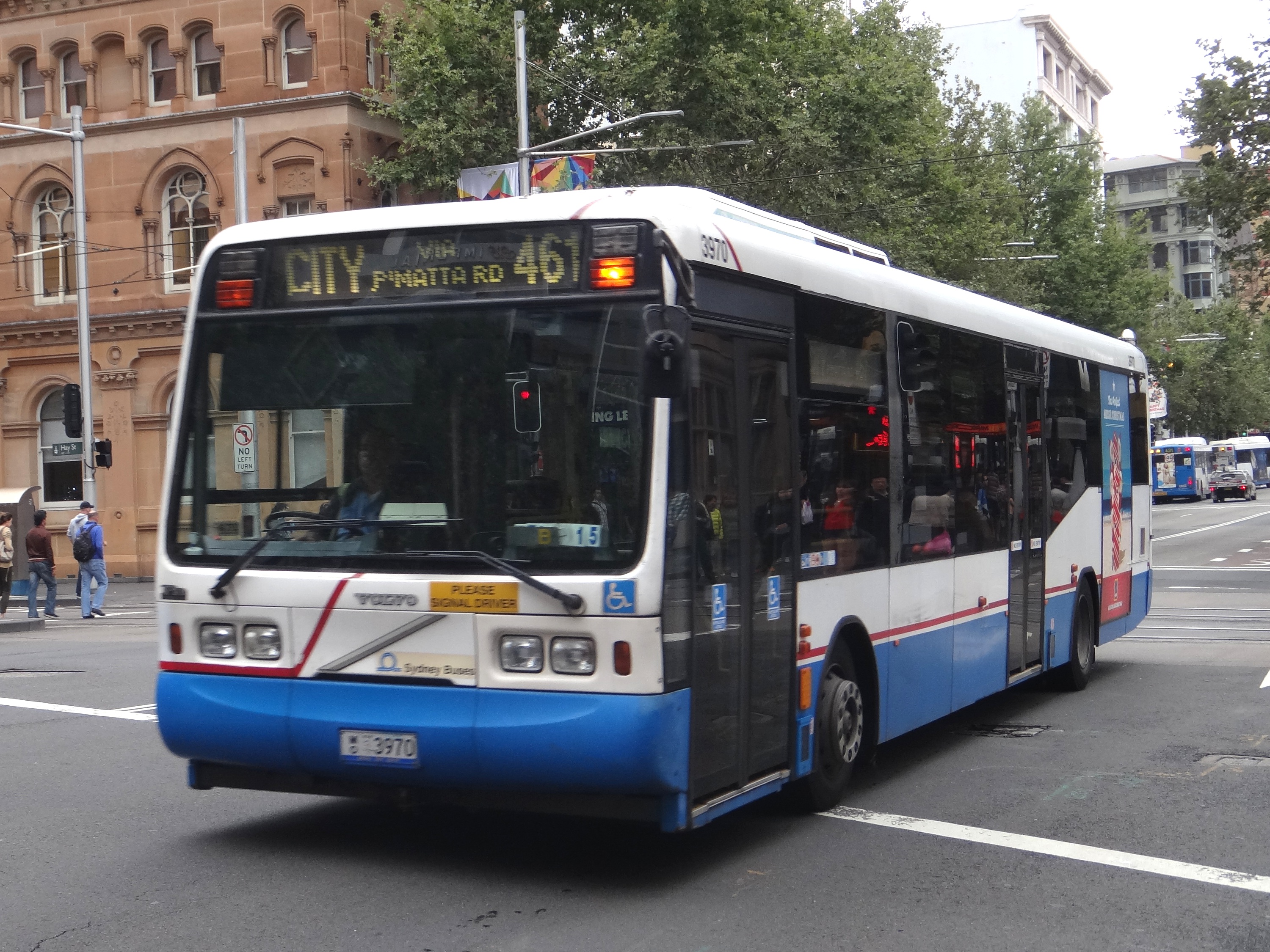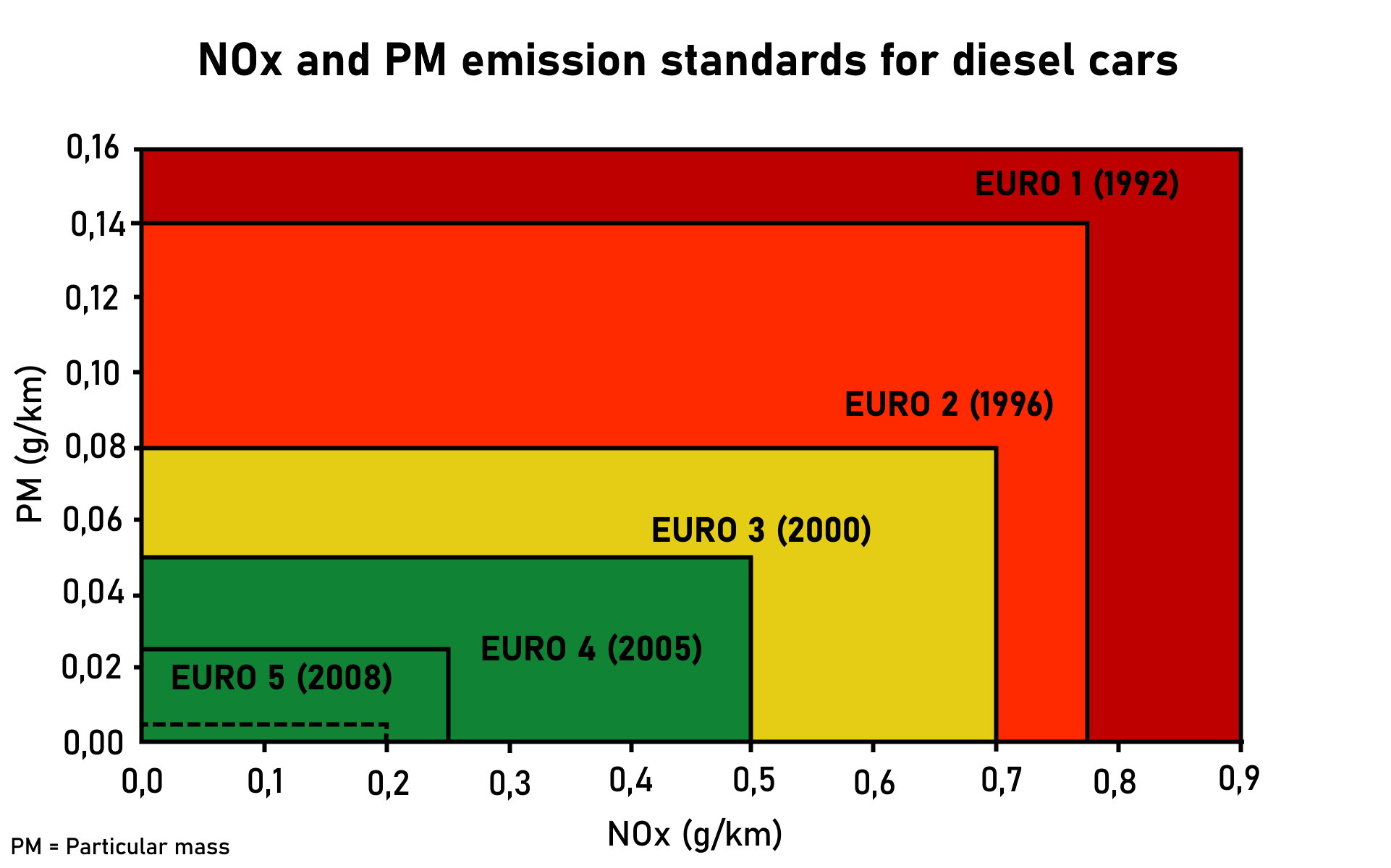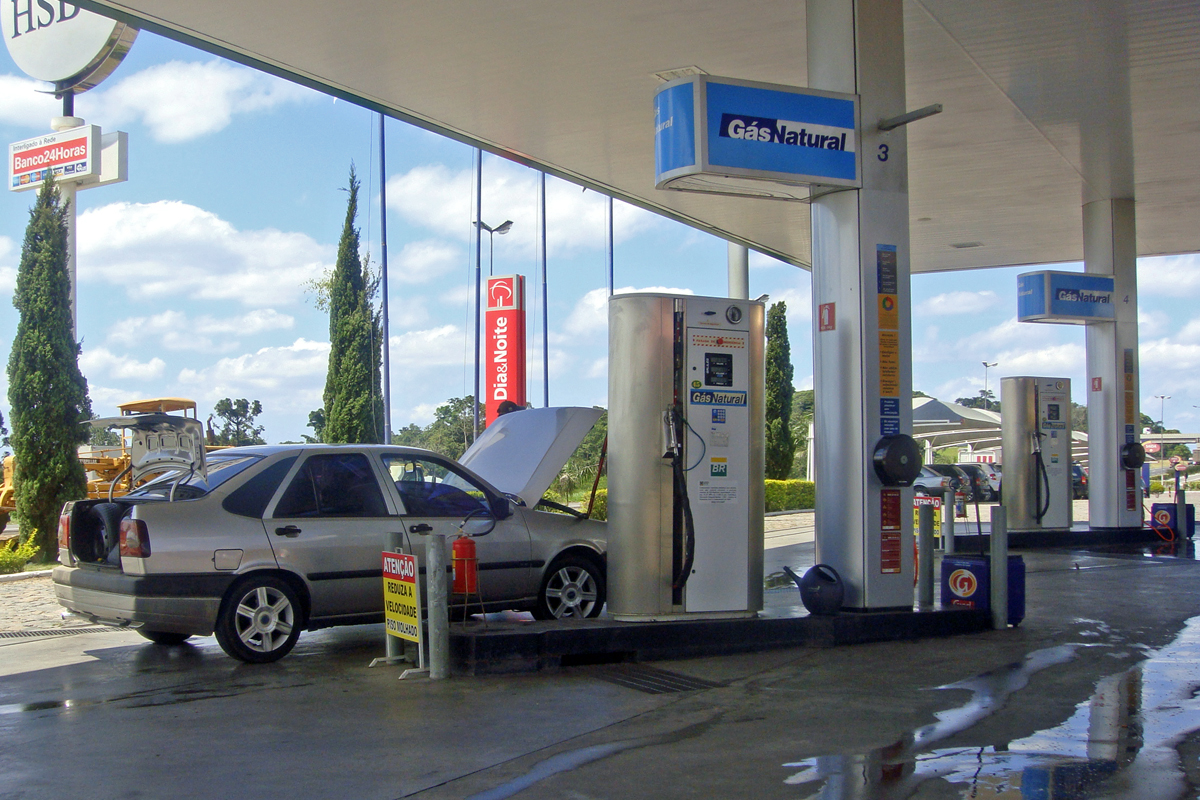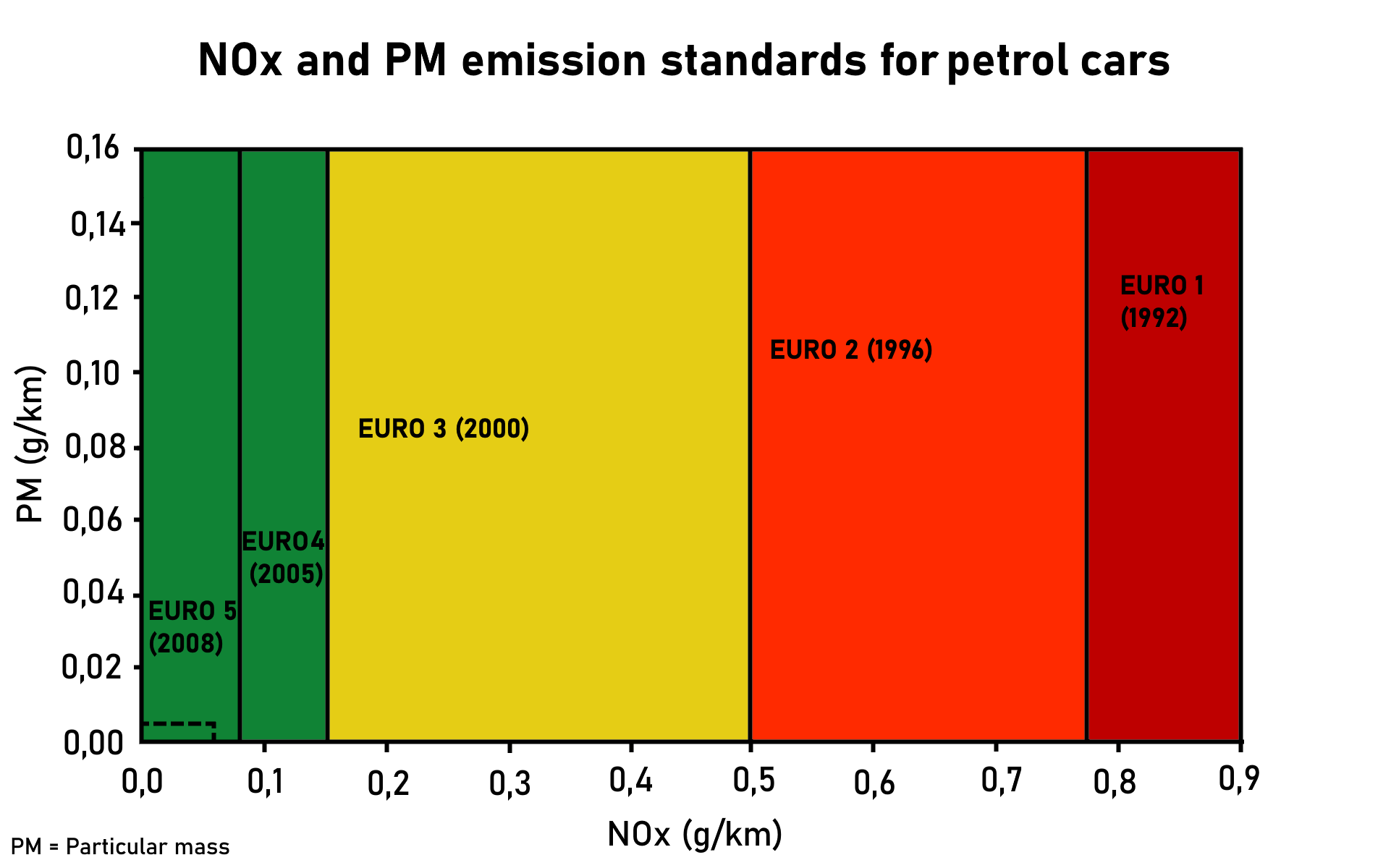|
Volvo B10BLE
The Volvo B10BLE is a rear-engined low-entry single-decker bus chassis manufactured by Volvo in Sweden between 1993 and 2004. The first prototypes were built in 1992, but mass production started in 1993, only a year after the high-floor B10B. It was popular in Australia, Scandinavia and the United Kingdom. It had the engine mounted on the rear overhang of the bus. It became the successor of the city bus version of the B10B and was used as a base for single-decker buses worldwide. The B10BLE was available in diesel powered format, and later in a compressed natural gas powered format with the fuel tanks on the roof of the bus. Its low-floor design was widely promoted by Volvo when it was first launched, on the basis of added convenience to the passengers, and the increase in transport efficiency due to the low-floor design. The production of the diesel powered variants ended in 2001 to give way for B7RLE and B12BLE, while the CNG variants were produced until 2004. In the Unit ... [...More Info...] [...Related Items...] OR: [Wikipedia] [Google] [Baidu] [Amazon] |
Finland
Finland, officially the Republic of Finland, is a Nordic country in Northern Europe. It borders Sweden to the northwest, Norway to the north, and Russia to the east, with the Gulf of Bothnia to the west and the Gulf of Finland to the south, opposite Estonia. Finland has a population of 5.6 million. Its capital and largest city is Helsinki. The majority of the population are Finns, ethnic Finns. The official languages are Finnish language, Finnish and Swedish language, Swedish; 84.1 percent of the population speak the first as their mother tongue and 5.1 percent the latter. Finland's climate varies from humid continental climate, humid continental in the south to boreal climate, boreal in the north. The land cover is predominantly boreal forest biome, with List of lakes of Finland, more than 180,000 recorded lakes. Finland was first settled around 9000 BC after the Last Glacial Period, last Ice Age. During the Stone Age, various cultures emerged, distinguished by differen ... [...More Info...] [...Related Items...] OR: [Wikipedia] [Google] [Baidu] [Amazon] |
Low-floor Bus
A low-floor bus is a bus or trolleybus that has no steps between the ground and the floor of the bus at one or more entrances, and low floor for part or all of the passenger cabin. A bus with a partial low floor may also be referred to as a low-entry bus or seldom a flat-floor bus in some locations. Low floor refers to a bus deck that is accessible from the sidewalk with only a single step with a small height difference, caused solely by the difference between the bus deck and sidewalk. This is distinct from high-floor, a bus deck design that requires climbing one or more steps (now known as step entrance) to access the interior floor that is placed at a higher height. Being low-floor improves the accessibility of the bus for the public, particularly the elderly and people with disabilities, including those using wheelchairs and walkers. Almost all are rear-engine, rear-wheel-drive layout. Configuration Low-floor and low-entry buses Low-floor buses are generally divide ... [...More Info...] [...Related Items...] OR: [Wikipedia] [Google] [Baidu] [Amazon] |
State Transit Authority
The State Transit Authority of New South Wales, also referred to as State Transit, was an agency of the Government of New South Wales operating bus services in Sydney. Superseding the Urban Transit Authority in 1989, it was also responsible for the provision of Sydney Ferries, ferry services in Sydney until 2004 and Newcastle Buses & Ferries, bus and ferry services in Newcastle until 2017. It ceased trading after 2 April 2022 with its remaining operations to be contracted out by Transport for NSW to replacement operators. , the New South Wales Government has not yet put forward a Bill (law), Bill for the dissolution of the State Transit Authority of NSW. History In view of its political sensitivity, the agencies responsible for public transport in New South Wales are frequently restructured. Buses and ferries were the responsibility of the Department of Government Transport until 1972, when it was merged with the Department of Railways New South Wales to form the Public Tr ... [...More Info...] [...Related Items...] OR: [Wikipedia] [Google] [Baidu] [Amazon] |
Euro IV
The European emission standards are vehicle emission standards that regulate pollution from the use of new land surface vehicles sold in the European Union and European Economic Area member states and the United Kingdom, and ships in European territorial waters. These standards target air pollution from exhaust gases, brake dust, and tyre rubber pollution, and are defined through a series of European Union directives that progressively introduce stricter limits to reduce environmental impact. Euro 7, agreed in 2024 and due to come into force in 2026, includes non-exhaust emissions such as particulates from tyres and brakes. Until 2030 fossil fueled vehicles are allowed to have dirtier brakes than electric vehicles. Background In the European Union, emissions of nitrogen oxides (), total hydrocarbon (THC), non-methane hydrocarbons (NMHC), carbon monoxide (CO) and particulate matter (PM) are regulated for most vehicle types, including cars, trucks (lorries), loc ... [...More Info...] [...Related Items...] OR: [Wikipedia] [Google] [Baidu] [Amazon] |
Biogas
Biogas is a gaseous renewable energy source produced from raw materials such as agricultural waste, manure, municipal waste, plant material, sewage, green waste, Wastewater treatment, wastewater, and food waste. Biogas is produced by anaerobic digestion with anaerobic organisms or methanogens inside an Anaerobic digestion, anaerobic digester, biodigester or a bioreactor. The gas composition is primarily methane () and carbon dioxide () and may have small amounts of hydrogen sulfide (), moisture and siloxanes. The methane can be combusted or oxidized with oxygen. This energy release allows biogas to be used as a fuel; it can be used in fuel cells and for heating purpose, such as in cooking. It can also be used in a gas engine to convert the energy in the gas into electricity and heat. After removal of carbon dioxide and hydrogen sulfide it can be compressed natural gas, compressed in the same way as natural gas and used to power Alternative fuel vehicle, motor vehicles. In the Un ... [...More Info...] [...Related Items...] OR: [Wikipedia] [Google] [Baidu] [Amazon] |
Compressed Natural Gas
Compressed natural gas (CNG) is a fuel gas mainly composed of methane (CH4), compressed to less than 1% of the volume it occupies at standard atmospheric pressure. It is stored and distributed in hard containers at a pressure of , usually in cylindrical or spherical shapes. CNG is used in traditional petrol/internal combustion engine vehicles that have been modified, or in vehicles specifically manufactured for CNG use: either alone (dedicated), with a segregated liquid fuel system to extend range (dual fuel), or in conjunction with another fuel ( bi-fuel). It can be used in place of petrol, diesel fuel, and liquefied petroleum gas (LPG). CNG combustion produces fewer undesirable gases than the aforementioned fuels. In comparison to other fuels, natural gas poses less of a threat in the event of a spill, because it is lighter than air and disperses quickly when released. Biomethane, biogas from anaerobic digestion or landfill, can be used. In response to high fuel prices a ... [...More Info...] [...Related Items...] OR: [Wikipedia] [Google] [Baidu] [Amazon] |
Euro II
The European emission standards are vehicle emission standards that regulate pollution from the use of new land surface vehicles sold in the European Union and European Economic Area member states and the United Kingdom, and ships in European territorial waters. These standards target air pollution from exhaust gases, brake dust, and tyre rubber pollution, and are defined through a series of European Union directives that progressively introduce stricter limits to reduce environmental impact. Euro 7, agreed in 2024 and due to come into force in 2026, includes non-exhaust emissions such as particulates from tyres and brakes. Until 2030 fossil fueled vehicles are allowed to have dirtier brakes than electric vehicles. Background In the European Union, emissions of nitrogen oxides (), total hydrocarbon (THC), non-methane hydrocarbons (NMHC), carbon monoxide (CO) and particulate matter (PM) are regulated for most vehicle types, including cars, trucks (lorries), locomotiv ... [...More Info...] [...Related Items...] OR: [Wikipedia] [Google] [Baidu] [Amazon] |
Dry Sump
A dry sump system is a method to manage the lubricating motor oil in Four-stroke engine, four-stroke and large Two-stroke engine, two-stroke Reciprocating engine, reciprocating internal combustion engines. The dry sump system uses two or more oil pump (internal combustion engine), oil pumps and a separate oil reservoir, as opposed to a conventional wet sump system, which uses only the main sump (American English, U.S.: oil pan) below the engine and a single pump. A dry sump engine requires a Relief valve, pressure relief valve to regulate negative pressure inside the engine so that internal seals are not inverted. Dry sump lubrication is common on larger diesel engines such as those used in ships, as well as gasoline engines used in Auto racing, racing cars, Aerobatics, aerobatic aircraft, high-performance personal watercraft, and Motorcycle, motorcycles. Dry sumps may be chosen for these applications due to increased reliability, oil capacity, reduction of oil starvation under ... [...More Info...] [...Related Items...] OR: [Wikipedia] [Google] [Baidu] [Amazon] |
Intercooler
An intercooler is a heat exchanger used to cool a gas after compression. Often found in turbocharged engines, intercoolers are also used in air compressors, air conditioners, refrigeration and gas turbines. Internal combustion engines Most commonly used with turbocharged engines, an intercooler is used to counteract the heat of compression and heat soak in the pressurised intake air. By reducing the temperature of the intake air, the air becomes denser (allowing more fuel to be injected, resulting in increased power) and less likely to suffer from pre-ignition or knocking. Additional cooling can be provided by externally spraying a fine mist onto the intercooler surface, or even into the intake air itself, to further reduce intake charge temperature through evaporative cooling. Intercoolers can vary dramatically in size, shape and design, depending on the performance and space requirements of the system. Many passenger cars use either front-mounted intercoolers locat ... [...More Info...] [...Related Items...] OR: [Wikipedia] [Google] [Baidu] [Amazon] |
Turbocharger
In an internal combustion engine, a turbocharger (also known as a turbo or a turbosupercharger) is a forced induction device that is powered by the flow of exhaust gases. It uses this energy to compress the intake air, forcing more air into the engine in order to produce more power for a given displacement. Turbochargers are distinguished from superchargers in that a turbocharger is powered by the kinetic energy of the exhaust gases, whereas a is mechanically powered (usually by a belt from the engine's crankshaft). However, up until the mid-20th century, a turbocharger was called a "turbosupercharger" and was considered a type of supercharger. History Prior to the inv ...[...More Info...] [...Related Items...] OR: [Wikipedia] [Google] [Baidu] [Amazon] |
Diesel Engine
The diesel engine, named after the German engineer Rudolf Diesel, is an internal combustion engine in which Combustion, ignition of diesel fuel is caused by the elevated temperature of the air in the cylinder due to Mechanics, mechanical Compression (physics), compression; thus, the diesel engine is called a compression-ignition engine (CI engine). This contrasts with engines using spark plug-ignition of the air-fuel mixture, such as a petrol engine (gasoline engine) or a gas engine (using a gaseous fuel like natural gas or liquefied petroleum gas). Introduction Diesel engines work by compressing only air, or air combined with residual combustion gases from the exhaust (known as exhaust gas recirculation, "EGR"). Air is inducted into the chamber during the intake stroke, and compressed during the compression stroke. This increases air temperature inside the Cylinder (engine), cylinder so that atomised diesel fuel injected into the combustion chamber ignites. The torque a dies ... [...More Info...] [...Related Items...] OR: [Wikipedia] [Google] [Baidu] [Amazon] |







